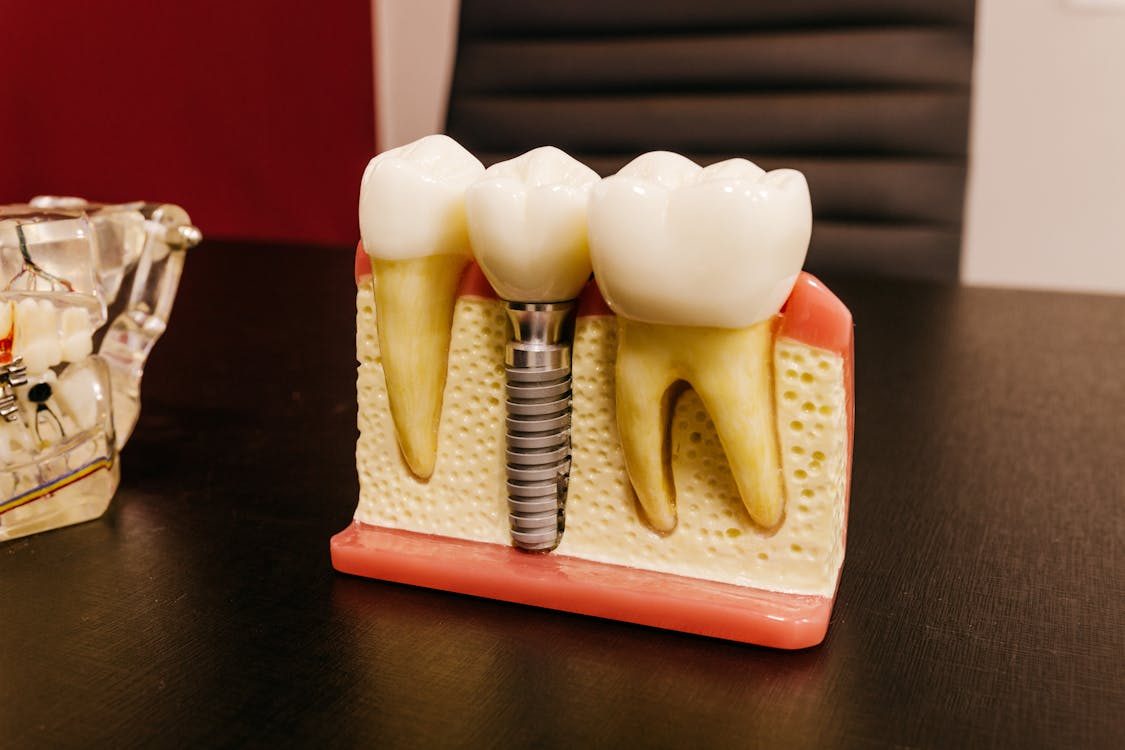All You Need To Know About Dental Implant

An implant can best be compared to an artificial root. A dental implant replaces an absent tooth root and is inserted into the jaw like a screw. Implants are made of a body-friendly material such as titanium. Sometimes they are provided with a ceramic layer. The implant provides support for a crown, bridge or overdenture. In the absence of one tooth or molar. The dentist places a metal or ceramic crown on the implant.
In the absence of some teeth or molars, the implants are provided with a stuck bridge in this situation. A bridge is a replacement for one or more missing teeth and/or molars that cannot be removed by the patient. In the absence of all teeth and molars, an overdenture can be placed on implants.
When is treatment with implants possible?
In principle, an implant can be placed on anyone with a fully grown jawbone (from about eighteen years of their age). For a successful treatment you must meet a number of conditions:

You must have enough jawbone to anchor the implants.
Your jawbone must be healthy. The gums of the remaining teeth should be healthy. If that is not the case, this will be treated first. You must be prepared to properly maintain the facilities that have been installed. The dentist will assess on the basis of X-rays whether you have enough jaw bone and whether it is healthy.
Nowadays it is possible to create a new jawbone in places where there is too little of it. NB. Smoking and excessive alcohol consumption have a very negative effect on the success of the treatment.
Reading Suggestion: Everything you need to know about oral health
How does implant treatment proceed?
Two ways of insertion
The implant is visible in the mouth (protrudes through the gums). The dentist no longer has to open the gums when applying the crown, bridge, or prosthesis.
The implant is completely locked under the gum after insertion. This approach provides less after-pain. In addition, there is less chance of infection. The gums are reopened when applying the crown, bridge or prosthesis. Your dentist or dental surgeon will discuss with you which approach is best for your situation. The dentist or dental surgeon inserts the implants.
First, you will be given a local anesthetic around the place where the implant will be placed. Then the gums are loosened where the implant is to be placed so that the jawbone becomes visible. Then a hole is drilled in the jawbone. The implant is screwed or tapped in it. The gums are then stitched. If you need more than one implant, they will almost always be inserted during the same treatment.
After insertion of the implants
The experiences with the treatments are variable. The bone itself has no sensation, but the gums can be slightly painful. If necessary, you will be prescribed a painkiller for this. It is often wise to adjust your diet for one or two weeks after implantation. Do this in consultation with your dentist or dental surgeon. The implant is firmly anchored in the bone three to six months after insertion.
You should not put stress on the implant during this period. A temporarily placed facility guarantees the chewing function and aesthetics as much as possible. After one or more implants have been anchored in the jaw bone, the dentist places the crown, bridge or prosthesis on it. To do this, he sometimes first removes a small piece of the gums above the implant under local anesthesia.
Hygiene for dental implants
An implant under a crown, tandimplantaat, or bridge is anchored in the jaw bone. It is very important to properly clean the transition from the crown or bridge to the gum. Brush this area carefully with a soft toothbrush using toothpicks, brushes, and/or dental floss. Poor oral hygiene can cause you to lose your implant. Implants that serve as pillars under an overdenture can be cleaned with a soft toothbrush, brushes, and/or (super) floss thread.
Twice a day brush the part of the dental implant that protrudes above the gum. Pay extra attention to the transition from the implant to the gum. Clean the space under the splint with brushes and/or super floss as directed by your dentist or dental hygienist. Failure to remove food debris and plaque from around the implants will cause gums to become infected. As a result, they eventually lose their grip, become loose, and can cause pain.
Reading Suggestion: Dentist Dublin’s Simple and Affordable Tips for Good Oral Health
Aftercare for dental implants
Good daily oral hygiene and regular dental check-ups are necessary after your implant has been placed. The dentist or dental surgeon will indicate when he wants to see you again for a check-up. During the check-up, the dentist pays attention to:
- The health of your gums
- The situation of the jawbone around your implants
- Wear of the crown, bridge, or prosthesis





